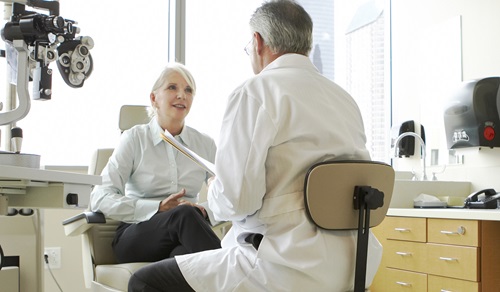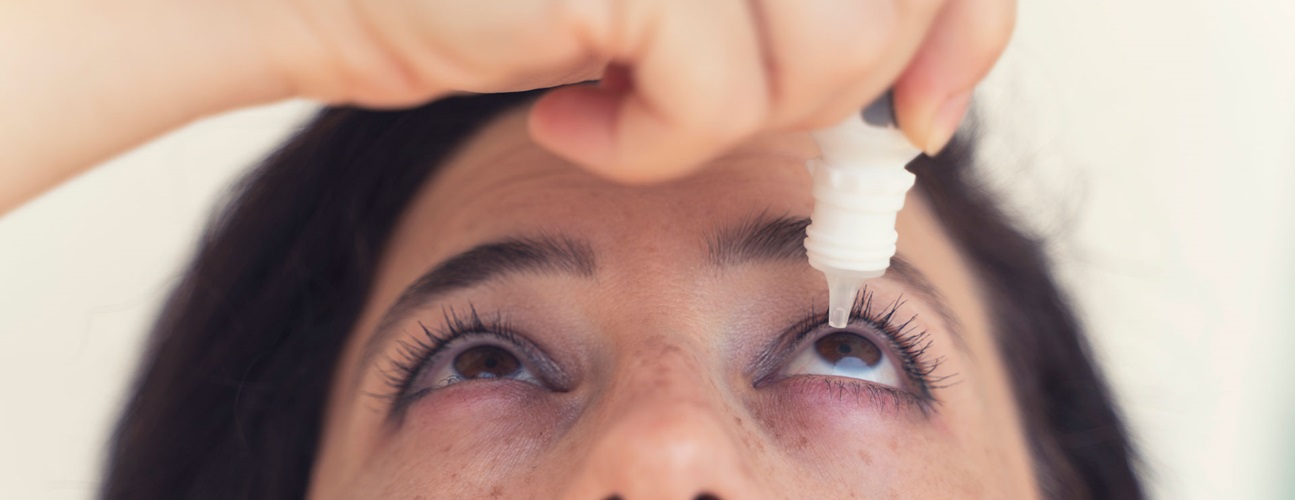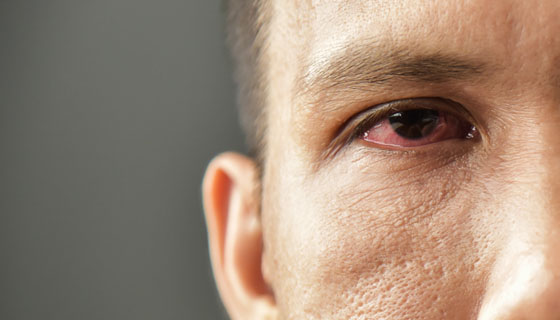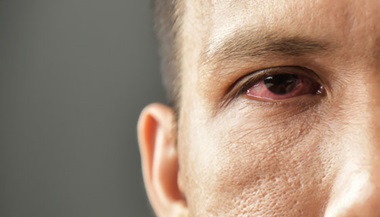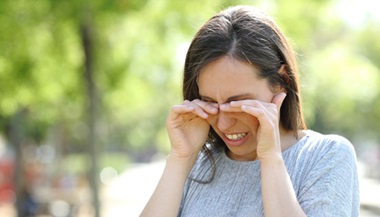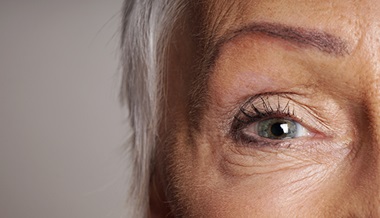Blepharitis
Featured Expert:
Blepharitis is a common disease of the eyelids that can cause painful tenderness and discomfort. Assistant professor of ophthalmology Lee Guo, O.D. of the Wilmer Eye Institute explains the symptoms, treatments and more related to the condition.
What Is Blepharitis?
Blepharitis is a common disease of the eyelids characterized by redness, thickening, and flakey or scaly crusting along the eyelids and eyelashes. It is sometimes known as "eye dandruff." Over time, a sticky plaque, or biofilm, forms along the lids, causing lash loss, clogged glands, infections and other complications.
Blepharitis is diagnosed during an eye exam. “When necessary, your doctor may swab the eyelid or take an eyelash sample in order to rule out infections and infestations like bacteria or demodex mites,” says Guo.
Blepharitis can take place towards the front of the eyelid (anterior blepharitis), affecting eyelashes, or the back of the lid (posterior blepharitis), affecting oil-producing Meibomian glands inside the eyelid itself.
Anterior blepharitis is commonly caused by bacteria (staphylococcus) or oily build-up (seborrhea) associated with skin conditions like rosacea.
Posterior blepharitis can worsen dry eye and lead to painful eyelid styes.
Blepharitis Causes
Blepharitis is caused by multiple issues and can be either chronic (symptoms on and off for months to years) or acute (sudden symptoms within the past week).
Chronic cases can develop through:
- Poor hygiene
- Seasonal allergies
- Ocular rosacea
- Make-up overuse
Acute cases can be caused by:
- Infections — bacterial, viral
- Infestations — demodex mites, lash lice
- Acute allergies — hypersensitivity to new medications, supplements, make-ups, face washes, lotions, pets or living/work environments
- Trauma — physical, chemical or thermal (heat)
- Toxicity — excessive preservatives, medications or supplements
“Less commonly, there can be underlying systemic conditions that need consultation with other medical specialties like dermatology and rheumatology,” says Guo. “These conditions include skin cancer, connective tissue disease, and immunologic conditions like cicatrizing conjunctivitis.”
Severe forms of acute blepharitis can lead to eyelid ulcers, which can destroy the eyelid architecture and lead to serious infections such as cellulitis.
Blepharitis Symptoms
Common symptoms of blepharitis include:
- Eyelid redness, swelling, or painful tenderness
- Foreign body sensation that is sandy or gritty
- Discharge that is watery, sticky or stringy
- Burning or stinging
- Tearing or watering
- Itching
- Light sensitivity
- Blurred vision
Blepharitis is associated with other eye conditions, including:
- Dry eye disease
- Hordeola (eyelid styes)
- Ocular rosacea ("spider veins" telangectasia in lids, cheeks, nose)
- Madarosis (loss of eyelashes)
- Trichiasis (misdirected eyelashes)
- Bacterial conjunctivitis ("sticky" pink eye)
- Viral conjunctivitis ("watery" pink eye, herpes, shingles, epidemic keratoconjunctivitis)
- Allergic conjunctivitis (seasonal, atopic)
- Contact dermatitis (hypersensitivity to new exposures or medications)
- Keratitis (corneal diseases like infiltrates and phylectenules)
- Demodex infestation (lash mites)
- Phthiriasis palpebrarum infestation (lash lice)
“If you are struggling with any of these symptoms or associated eye conditions, it’s important to see your eye doctor right away for examination so that prompt diagnosis and appropriate treatment can be initiated early on,” says Guo.
Blepharitis Treatment
While blepharitis cannot be permanently fixed, its symptoms can be readily managed with daily eyelid hygiene measures and medications on a case-by-case basis.
Common treatment approaches include:
Eyelid hygiene
- Warm moist compresses such as washcloths or microwaveable heat masks, or electronic compresses, can be applied to the eyelids and eyelashes with eyes closed for 10 minutes.
- Follow that with a gentle cleaning of the eyelids and eyelashes with eyes closed for 30 seconds. Scrubs include diluted, foamed baby shampoo or various commercially available lid-scrub products that come in the form of foams or disposable wipes. There are also spray-on products that may have antimicrobial or antiseptic properties.
- Finish the process by rinsing the eyelids and eyelashes with clean water, eyes closed.
Cool compresses
Apply a cool compress to the eyelids with eyes closed in several sessions of 10 minutes throughout the day to aid against eyelid inflammation. This can be alternated with warm compresses as directed by your doctor.
Lubrication
Dry eye is often treated at the same time as blepharitis. Chilled, preservative-free, artificial tears are often recommended and dosed four times per day in both eyes, unless otherwise directed by your doctor.
Medications
Antibiotics, steroids and other combinations of medications are prescribed in the form of eye drops or pills taken by mouth. In order to decrease the risk of adverse drug interaction, side effects, and other complications, it is extremely important to follow all dosing instructions and orders by your doctor.
Nutritional
Doctors will often recommend dietary and lifestyle changes. Sometimes dietary supplementation with an essential fatty acid such as omega-3 is recommended due to its antiinflammatory potential. However, if you start any dietary supplements, you should always consult with your primary care physician and dietician, because not all supplements are effective or appropriate.
Procedures
In severe cases of blepharitis, your doctor may recommend in-office procedures, such as:
- Microblepharoexfoliation: Microsponge gently exfoliates away the biofilm, crusting, bacterial colonies and demodex infesting the eyelashes
- Intense pulsed light (IPL): Non-laser light energy is applied to the eyelid skin, and this can liquefy obstructions in the Meibomian glands, improve oil secretion, decrease eyelid redness and reduce spider veins.
- Thermal pulsation: Specialized applicator devices are gently applied to the eyelids which provide controlled thermal (heat) energy and massage (pulsation) to the eyelids from the inside-out and outside-in. Heat energy can liquefy obstructions in the Meibomian glands and improve oil secretion.
- Thermal expression: A specialized instrument manually applied to the eyelids provides controlled thermal (heat) energy and expressive force to the Meibomian glands. This approach can also improve oil secretion.
Treatment Ocular Surface Disease and Dry Eye Clinic at the Wilmer Eye Institute
